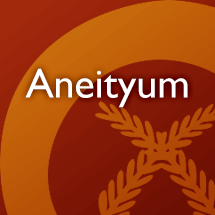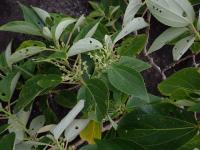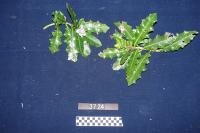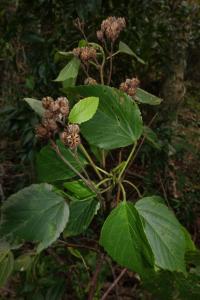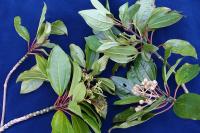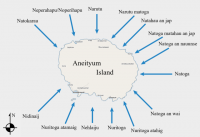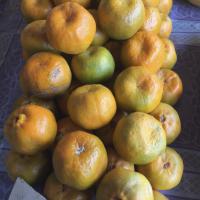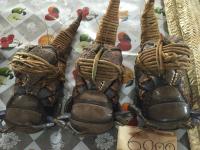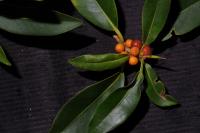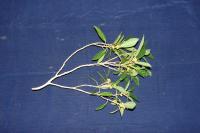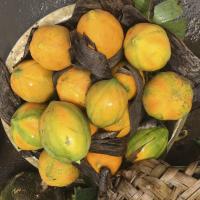This page has returned 100 entries
nelm̃ai
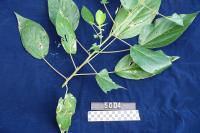
n. tree to 4 m tall, dbh 8 cm (collection: Michael J. Balick #5004)
Example: This plant is used to make fishing line, perhaps moreso in the past than today. Collect young shoots form the sides of the tree, peel off the bark, soak the stem in salt water or fresh water for 1-2 weeks to ret the stems then separate the fibers, dry in the sun and use to make string for fishing. The leaves are used for feeding pigs.
bookmarknelm̃ai
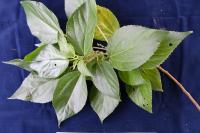
n. tree to 8 m, dbh 10 cm (collection: Michael J. Balick #4863)
Example: Fiber: Collect the stems of this plant, peel off the outer bark, soak (ret) in seawater for 1 week, then put stone on top of it-the fibers are loosened by the retting, peel them off and hang in the sun to dry and bleach. Weave small baskets, grass skirts and other things from this fiber. When sticks are placed in areas of the sea, shells are attracted to these sticks and people can collect the shells used for adornment--the animals in the shells like to eat the material on the sticks. Dried fruits of this plant are eaten by birds.
bookmarknelm̃ai apeñ
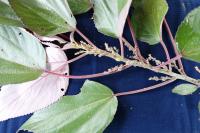
n. tree 6 m tall, dbh 15 cm (collection: Michael J. Balick #4864)
Example: Fiber: Collect the stems of this plant, peel off the outer bark, soak (ret) in seawater for 1 week, then put stone on top of it-the fibers are loosened by the retting, peel them off and hang in the sun to dry and bleach. Weave small baskets, grass skirts and other things from this fiber. When sticks are placed in areas of the sea, shells are attracted to these sticks and people can collect the shells used for adornment--the animals in the shells like to eat the material on the sticks. Dried fruits of this plant are eaten by birds.
bookmarknelnjen

nelnjen natimi

nelpon nohop a nelco
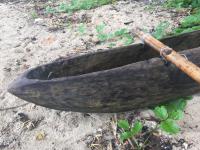
nemdaj
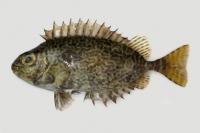
n. Little spinefoot, scribbled rabbitfish
Example: Photo by Kathleen Kresner-Reyes / Fishbase, License: CC BY-NC 3.0 via Fishes of Australia
bookmarknemeg
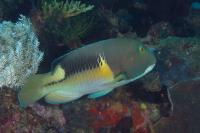
n. Anchor tuskfish, Orange-dotted tuskfish
Example: Photo by Mark Rosenstein, iNaturalist: CC BY-A-NC-SA 3.0 via Fishes of Australia
bookmarknemek
n. yellow leaves for making petticoats
bookmarknemered
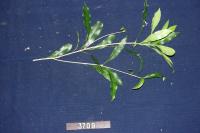
nemijcopau
n. kind of palm
bookmarknemit
n. kind of tree
bookmarknemla
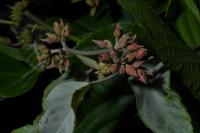
n. tree, 4 m tall (collection: Gregory M. Plunkett #4127)
Example: 1. This wood can be used to start a fire, where there are no matches. Two dried pieces of wood are rubbed vigorously together to create tinder. The tinder is then added to dried material in order to start a fire. 2. The wood of this plant is used as rafters in traditional houses.
bookmarknemlowoc
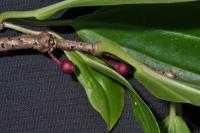
nemtanla

n. herb to 1 m, flowers yellow. (collection: Michael J. Balick #4892)
Example: If a person is coming to a "new" village, e.g. not their own, and they have a branch in their hand, it means that they are coming in peace and not trying to harm anyone else in the new village. Or if they are asking for something that might be found in the new village, they hold the branch of this species and pass it to a person from that village so they will accept you.
bookmarknemtokei
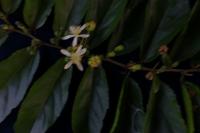
n. tree to 7 m tall, dbh 8 cm (collection: Michael J. Balick #4861)
Example: When a person does heavy work and their body feels tired, they should take 1 handful of leaves, squeeze them into a cup of water and drink--this will make the person feel better. People can drink this from time to time to give the body energy even before you are tired. To treat constipation, take 4- 8’ pieces of stem from a 2 cm dbh section of the tree, peel the outside bark off, collect the inner bark and mash with a stone or hammer, put in a colander to strain out the wood, add 1.5 l water, the liquid becomes green or whitish with sticky liquid. Drink this one time, it tastes cold and then after about 30 minutes it feels like the bowel is working and then normal function returns--this does not induce diarrhea but rather returns the bowel to normal function.
bookmarknenho
n. the name of a poisonous plant
bookmarknenis
n. cloth of coconut tree; anything useless. Ek idivaig nenis ainyak, I am quite useless
bookmarknepahas
n. kind of tree
bookmarknepat
n. kind of banana
bookmarknepcev
n. shark
bookmarknepek cat
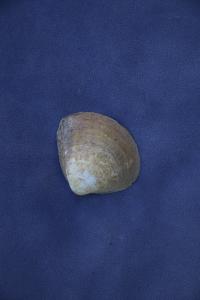
nepekhau
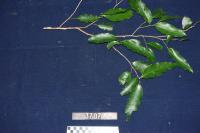
nepelvan wou
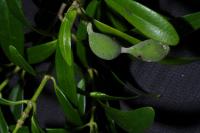
n. liana, growing along ridge in dense rainforest. Latex white (collection: Gregory M. Plunkett #4074)
Example: 1. The outer stem is used to make an ornament call "Intyecrec". When one returns from the bush, you make this to indicate your trip to the bush. Other plants are at times including in the dressing. Each have their own significance.
bookmarknepelvanwou
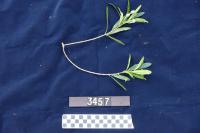
n. liana, on Polyscias cissodendron (collection: Gregory M. Plunkett #3457)
Example: 1. Macerate the young stems, remove the outer "skin" to release the odor of the stem and weave into a head garland for decoration. 2. People use it as a headdress. This is a male plant, ancestors used both male and female wrapped together for the headdress. Man would put this on head to attract a woman that he liked. Be careful when you are passing other women who will be attracted to the wearer – so the person can’t speak to them so he can focus on the one he is attracted to.
bookmarknepig
n. night
bookmarknepig sepahai
nepig u wara
n. wind-related term; no definition provided
bookmarknepig upni
nepigpig
n. before daylight
bookmarknepihti
n. kind of tree
bookmarknepiloan
n. tender shoots
bookmarknepilvan
n. tender shoots
bookmarknepjen epjen
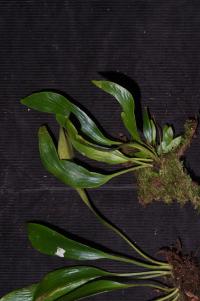
nepjenepjen
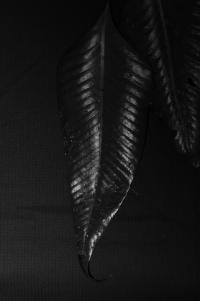
n. epiphytic vine climbing on trees, growing in dense rainforest. (collection: Gregory M. Plunkett #4091)
Example: 1. When a child is between 1 mos. and 1 yr. if the father persists too soon in resuming sexual relations with the mother, the child can become sick. In preparation for the sickness, green leaves are collected. When the sickness occurs, the leaves (now dry) are burned and the baby is washed with the charcoal. 2. After visitors leaves one’s house, one must not hurry to return to their gardens. One waits a few days, then swims with the rachis of this fern tied about their waist. If this practice is not followed, it is believed that the plants in one’s gardens will grow weak.
bookmarknepnai

n. tree to 5 m, flowers white. Growing in secondary forest with metroxylon palms and other large trees. (collection: Michael J. Balick #4954)
Example: The pear shaped fruits are eaten when ripe. Peel off the outer skin, eat inner part and discard the seed. The leaves are used to protect food as it is being cooked on an earth oven. To prepare the oven, pile hot stones, then put a layer of leaves on the stones, and then place hot stones on top of the leaves. To make a hot oven, the stones are lined in a pit, a fire lit, more stones placed on firewood and the top layer of stones gets very hot. Then, remove the stones from the top of the wood, and cook food o the bottom layer of stones, add a layer of leaves, place the food on top of this, then cover with a layer of leaves and then pile the rest of the hot stones on top of the leaves.
bookmarknepñatimi
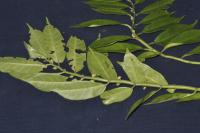
n. epiphyte on syzygium tree, growing in secondary forest along trail above river. old fruits. (collection: Gregory M. Plunkett #3660)
Example: Put several leaves of this species together to wrap food, especially the fresh water eel, and to carry plants of taro, kava, holding the leaves over one’s shoulder to carry these crops.
bookmarknepnou

nepya
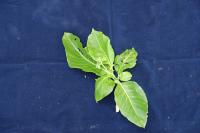
n. tree, 6 m tall (collection: Gregory M. Plunkett #3541)
Example: 1. The young leaves are placed under a pig being cooked in the earth oven, on top of stones, the fat drips on the leaves and then people eat the leaves with pig fat on it--said to be delicious. The branches are used to make pig pen fences. 2. Collect top branches, chop leaves boil and eat like island cabbage – or cook on charcoal and wrap fish w/ this leaf.
bookmarknerere
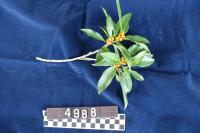
n. tree to 10 m, dbh 75 cm (collection: Michael J. Balick #4988)
Example: The young aerial roots are cut from the stems of the tree and used as a local rope, to tie things, help construct temporary shelters, as well as to make string for a hunting bow. Flying foxes like to eat this fruit so in the night when the fruit is mature hunters come by this tree to hunt flying foxes as well as hunting birds during the day. Hunters use bows and arrows for birds, and throwing sticks (natou) made from any plant to hunt flying foxes.
bookmarknerero
n. calabash
bookmarkneri
n. kind of plant, grass, or fern
bookmarkneri itai
n. leaves; grass
bookmarknerid u uncat
n. the tow of flax
bookmarknerifake
n. kind of taro
bookmarknerin
n. a leaf
bookmarknerin cat
n. green pandanus leaf
bookmarknerin nujipsotan
n. blade, as of corn or grass
bookmarknerinabod

n. Brassy chub, lowfin drummer
Example: Photo by Biodiversity Institute of Ontario, License: CC BY-SA 3.0 via Fishes of Australia
bookmarkneroa
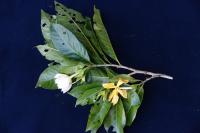
n. tree, 6 m tall (collection: Gregory M. Plunkett #3513)
Example: 1. The flower is used to make a necklace and the wood used as poles for a house roof. The flower is very fragrant and people put it behind their ear to enjoy the aroma. The leaf is used to bake taro in the earth oven. Use a fire to heat stones, then when the fire burns down and the stones are hot, pile these leaves on top of the hot stones and then place the food being cooked--taro, fish, pig, cassava, banana or other foods--on top of the leaves. Then pile more of these leaves on top of the food and then place additional hot stones on top of that pile of leaves. While the food is cooking--each type of food takes a different amount of time--the leaves give off a very nice smell and help flavor the food. 2. Firewood, flower smells good, put in coconut oil to give it aroma. Grate coconut, add small amount of water, put in bowl, heat until water is evaporated, the oil is on top, take all the coconut cream on bottom save oil in another pot. Drop 2-3 flowers into coconut oil and boil, or more flowers. Try not to burn the oil. Take out flowers and use pure oil. Also used for final covering of large earth oven during feast along with GMP 3503 – esp. wedding feast. Planting pole and hard and heavy wood – sharp end. 3. This is a "calendar plant." When it flowers, people know that the taro is ready to harvest.
bookmarkneroa
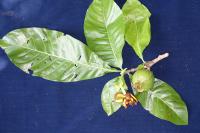
n. tree, 6-7 m tall (collection: Gregory M. Plunkett #3527)
Example: 1. The flower is used to make a necklace and the wood used as poles for a house roof. The flower is very fragrant and people put it behind their ear to enjoy the aroma. The leaf is used to bake taro in the earth oven. Use a fire to heat stones, then when the fire burns down and the stones are hot, pile these leaves on top of the hot stones and then place the food being cooked--taro, fish, pig, cassava, banana or other foods--on top of the leaves. Then pile more of these leaves on top of the food and then place additional hot stones on top of that pile of leaves. While the food is cooking--each type of food takes a different amount of time--the leaves give off a very nice smell and help flavor the food. 2. Firewood, flower smells good, put in coconut oil to give it aroma. Grate coconut, add small amount of water, put in bowl, heat until water is evaporated, the oil is on top, take all the coconut cream on bottom save oil in another pot. Drop 2-3 flowers into coconut oil and boil, or more flowers. Try not to burn the oil. Take out flowers and use pure oil. Also used for final covering of large earth oven during feast along with GMP 3503 – esp. wedding feast. Planting pole and hard and heavy wood – sharp end. 3. This is a "calendar plant." When it flowers, people know that the taro is ready to harvest.
bookmarkneroa
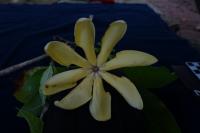
nerop
n. kind of banana
bookmarknerop
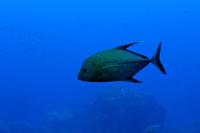
n. Black jack
Example: Photo by John Turnbull, License: CC BY-SA 3.0 via Fishes of Australia
bookmarknerophat
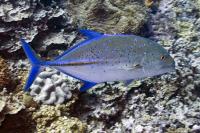
n. Bluefin trevally (male) (reef fish)
Example: Photo by Jan Messersmith, License: CC BY-NC-ND 3.0 via Fishes of Australia
bookmarknerophat
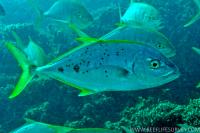
n. Yellowspotted trevally, Turrum
Example: Photo by Rick Stuart-Smith / Fishes of Australia, License: CC BY-A 3.0 via Fishes of Australia
bookmarknerumut
n. a hollow place in taro
bookmarknese
n. the takoma or tekma, a tree with white flowers
bookmark